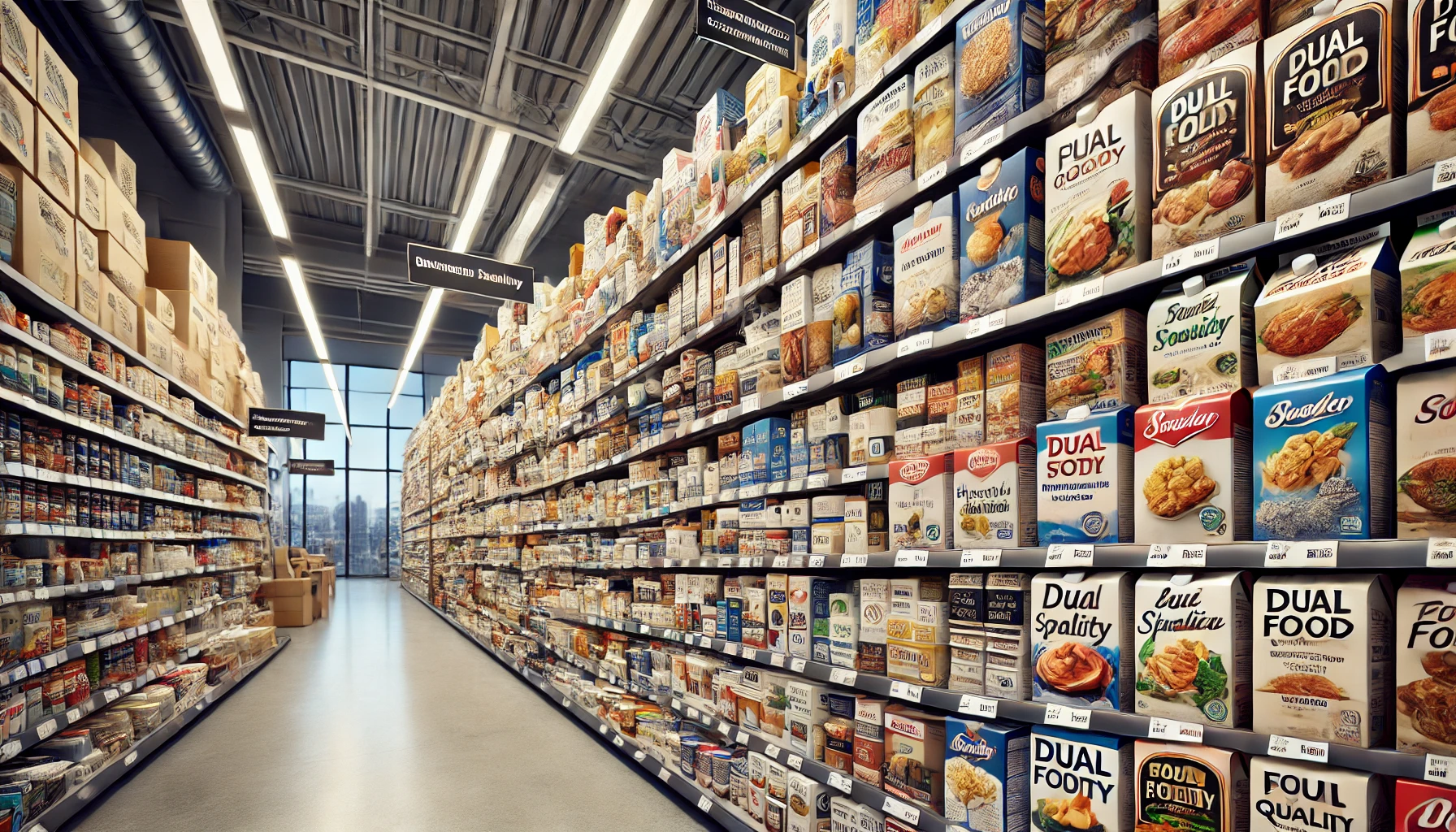Byline: Reporting on packaging safety, regulation and the science behind it
Beyond measurement, nuclear science also protects food: carefully controlled irradiation reduces pests and pathogens and extends shelf life while maintaining safety—tools the IAEA supports Member States to deploy.

Food-contact materials—from plastic clamshells and take‑away tubs to tins, ceramics, paper and glass—can shed chemicals or particles into food. Migration is driven by heat, time, and the food’s fat or acidity: the hotter, longer and fattier/acidic the conditions, the more likely substances move from packaging into food. Europe’s framework law (Regulation (EC) No 1935/2004) explicitly treats all food‑contact materials (FCMs) as potential sources of migration and requires proof of safety before market placement.
Recent research has upended some assumptions. A French study led by ANSES found beverages in glass bottles contained five to 50 times more microplastics than drinks in plastic or cans—largely traced to the painted, polyester‑based coatings in metal caps rather than the glass itself. Several outlets reported concentrations around ~100 particles per liter in some glass‑bottled drinks.
Contaminants of concern include:
-
Heavy metals (e.g., from ceramic glazes, metallic components),
-
Endocrine disruptors such as bisphenols and phthalates,
-
PFAS “forever chemicals” used for grease‑proofing, and
-
Micro- and nanoplastics from container walls, caps, coatings or processing equipment. The International Atomic Energy Agency (IAEA) highlights all four as priorities in packaging safety monitoring.
The nuclear and related toolset that finds problems at trace levels
Scientists now routinely combine nuclear and complementary techniques to pinpoint contaminants with high confidence:
-
Neutron Activation Analysis (NAA) and X‑ray fluorescence (XRF): non‑destructive screening for metals and toxic elements.
-
Inductively Coupled Plasma Mass Spectrometry (ICP‑MS), often with isotope‑dilution: gold‑standard quantification of metals at ultra‑trace levels; isotope‑dilution adds a labeled “spike” for precise mass‑balance accounting.
-
Chromatography–mass spectrometry (e.g., LC‑MS/GC‑MS): targeted detection of migrating organics such as bisphenols, phthalates and NIAS (non‑intentionally added substances).
-
Microplastics detection: micro‑FTIR and micro‑Raman microscopy chemically fingerprint particles down to tens of micrometers; py‑GC/MS provides polymer/additive profiles. These methods have become de‑facto standards in labs.
-
Stable‑isotope analysis: verifies claims about bio‑based polymers and tracks origins of contaminants.
Beyond measurement, nuclear science also protects food: carefully controlled irradiation reduces pests and pathogens and extends shelf life while maintaining safety—tools the IAEA supports Member States to deploy.
Policy is catching up: the BPA bans and PFAS actions
-
European Union: On 19 December 2024, the European Commission adopted Regulation (EU) 2024/3190, banning bisphenol A (BPA) in most food‑contact uses and tightening rules for other hazardous bisphenols. It entered into force in January 2025, with transition measures for specific sectors.
-
Switzerland: Effective 1 July 2025, Switzerland revised its FCM ordinance to align closely with the EU and ban BPA and other hazardous bisphenols, setting detection thresholds and planning a full phase‑out by January 2029.
-
United States (state level): In the absence of a comprehensive federal ban on PFAS in packaging, over a dozen states have enacted restrictions; meanwhile, FDA has overseen voluntary phase‑outs of certain PFAS grease‑proofing agents in food packaging and continues monitoring.
These shifts raise the bar for industry compliance and accelerate substitution away from legacy chemistries.
Innovation pipeline: AI‑designed, safer high‑barrier materials
A new wave of AI‑assisted materials discovery aims to deliver high‑barrier, recyclable packaging that resists oxygen and moisture without hazardous additives. Nestlé and IBM Research recently unveiled a generative‑AI approach—built on chemical language models—to propose and screen candidate materials for safety, performance and recyclability. IBM has also open‑sourced foundation models to speed materials discovery across sectors, including consumer packaging.
What the glass‑cap microplastics finding means in practice
The ANSES‑led study points to cap systems as an overlooked source of microplastics in glass‑packaged drinks. Press coverage of the study reported that removing cap residues reduced particle counts in experimental tests—an engineering hint for manufacturers to reformulate paints/liners and adjust cap‑cleaning and application steps. For consumers, the take‑home is not that glass is “bad,” but that closures matter and merit rapid redesign and tighter specifications.
Practical steps for households and food businesses
While regulators and industry work on safer materials, a few evidence‑based habits reduce exposure today:
-
Avoid heating in single‑use plastics. USDA food‑safety guidance says to only microwave in containers labeled microwave‑safe; do not microwave in one‑time‑use tubs or take‑out containers that can warp, melt and migrate chemicals. Transfer to glass or ceramic.
-
Mind time, temperature and food type. Hot, oily or acidic foods drive more migration—minimize prolonged hot storage in plastic. (This is a core principle in EFSA’s approach to migration testing.)
-
Choose durable reusables. For daily use, prefer glass, stainless steel or ceramic for storage and reheating; replace any container that’s scratched or clouded. (This advice aligns with multiple public‑health communications summarizing migration risks.)
-
Watch closures. If opting for glass‑bottled beverages, note that cap design/lining—not the glass—can be the weak link. Manufacturers should specify low‑shedding liners and paints and verify with micro‑FTIR/Raman.
How the IAEA is helping countries close the safety gap
Through the Joint FAO/IAEA Centre and the Atoms4Food initiative, the IAEA is transferring methods, reference materials and training so national labs can validate migration, metals and microplastics findings and enforce rules. The Agency has also worked with UN partners and industry—e.g., at the Vienna Sustainable Food Packaging ConFex (VSFP) in 2024 and at ProPak MENA 2025—to align innovation with safety and recyclability goals.
The bottom line
Safer packaging is rapidly becoming a regulatory requirement and a market differentiator. Nuclear and complementary analytical techniques give regulators and companies the forensic tools to detect problems early; new policy (EU, Switzerland) is phasing out high‑risk substances; and AI‑guided material design is speeding up the shift to high‑performance, low‑hazard solutions. The goal is simple yet urgent: ensure that what protects your food also protects you.










